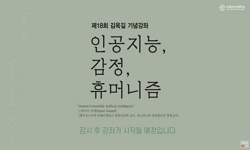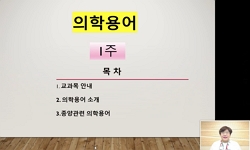본 연구는 폴란드어 비대격 동사의 사동문과 기동문의 유형 및 그 교체 현상에 대해 살펴보고 어떤 요소가 교체에 영향을 끼치는지를 분석한다. 또한 사동-기동 교체를 통해 기동 동사의 두 ...
http://chineseinput.net/에서 pinyin(병음)방식으로 중국어를 변환할 수 있습니다.
변환된 중국어를 복사하여 사용하시면 됩니다.
- 中文 을 입력하시려면 zhongwen을 입력하시고 space를누르시면됩니다.
- 北京 을 입력하시려면 beijing을 입력하시고 space를 누르시면 됩니다.
https://www.riss.kr/link?id=A100790398
- 저자
- 발행기관
- 학술지명
- 권호사항
-
발행연도
2015
-
작성언어
-
- 주제어
-
KDC
920
-
등재정보
KCI등재
-
자료형태
학술저널
-
수록면
3-38(36쪽)
-
KCI 피인용횟수
1
- 제공처
-
0
상세조회 -
0
다운로드
부가정보
국문 초록 (Abstract)
본 연구는 폴란드어 비대격 동사의 사동문과 기동문의 유형 및 그 교체 현상에 대해 살펴보고 어떤 요소가 교체에 영향을 끼치는지를 분석한다. 또한 사동-기동 교체를 통해 기동 동사의 두 유형인 비재귀적 기동 동사와 재귀적 기동 동사의 의미적 차이와 실제 쓰임에 대해서도 살펴보고 있다. 기존 폴란드어 사전에는 두 기동 동사를 유의어로 표기할 뿐 그 의미적 차이 및 쓰임의 차이에 대해 기술하고 있지 않다. 그러므로 외국인 학습자로서는 이들의 차이를 제대로 이해하고 사용하는 데 어려움이 있다. 또한 한국어의 사동-기동 교체는 폴란드어의 그것과 달리 그 유형이 매우 다양하기 때문에 한국인 폴란드어 학습자로서는 두 동사의 차이를 이해하고 구분하여 사용한다는 것은 쉽지 않다. 본고에서는 사동문과 기동문의 교체를 통해 사전적으로 동일하게 표기된 두 기동 동사의 의미적 차이를 살펴보고 폴란드어 모어 화자들이 실제 언어생활에서 두 기동 동사의 의미적 차이를 구별하여 사용하고 있는지를 폴란드어 코퍼스를 활용하여 확인함으로써 한국인 폴란드어 학습자들을 위한 교수 방향 설정에 도움이 될 것으로 기대된다.
다국어 초록 (Multilingual Abstract)
This paper aims to study the causative-inchoative alternation of unaccusative verbs in Polish and the use of two types of inchoative verbs in actual use by Polish native speakers. According to studies presented by Rościńska-Frankowska and ot...
This paper aims to study the causative-inchoative alternation of unaccusative verbs in Polish and the use of two types of inchoative verbs in actual use by Polish native speakers. According to studies presented by Rościńska-Frankowska and other linguistic experts, Polish inchoative verbs can be divided into two types depending upon whether they have the reflexive‘się’ as the morphological marker: reflexive inchoative (anticausative) verb & non-reflexive inchoative verb. These two types of inchoative verbs have morphological, syntactic and semantic differences. Morphologically they have different affixes and syntactically the reflexive inchoative forms are only possible when they alternate with causative forms. Semantic events of reflexive forms can be used with person or something, but events of non-reflexive forms happen internally or spontaneously without external effects. It is noted that many dictionaries do not define nor explain the differences between the two inchoative forms. Moreover, in several languages the transitive causative form is morphologically unmarked and the intransitive inchoative form can be derived by addition ‘się’. This alternation in Korean shows different aspects compared with Polish. It is thus not easy to understand and use properly by Korean learners while conversing in Polish. Based upon previous academic studies this paper recognizes the use of two inchoative forms in the Polish corpus in order to confirm that Polish speakers feel and distinguish the differences of meaning.
목차 (Table of Contents)
- 1. 들어가는 말
- 2. 폴란드어 사동과 기동 표현의 유형과 의미
- 3. 비대격동사의 사동-기동 교체
- 3.1. 사동-기동 교체의 실현 방법
- 3.2. 접두사와 접미사의 역할
- 1. 들어가는 말
- 2. 폴란드어 사동과 기동 표현의 유형과 의미
- 3. 비대격동사의 사동-기동 교체
- 3.1. 사동-기동 교체의 실현 방법
- 3.2. 접두사와 접미사의 역할
- 3.3. 재귀사 się
- 4. 실제 언어생활에서의 쓰임
- 5. 맺는 말
참고문헌 (Reference)
1 Mozzicato, Federico, "한국어와 이태리어의 비대격동사의 의미구조에 관한 고찰 : 사동/기동교체를 중심으로" 서울대학교 대학원 2001
2 연재훈, "한국어에 능격성이 존재하는가 -능격의 개념과 그 오용 -" 한글학회 (282) : 125-154, 2008
3 남승호, "한국어 술어의 사건 구초와 논항 구조" 서울대학교 출판부 2007
4 김태우, "한국어 기동문의 역사적 검토" 구결학회 (2) : 133-143, 2013
5 김윤신, "한국어 기동 동사의 어휘 의미 구조와 생성적 기제" 언어교육원 41 (41): 493-516, 2005
6 민병곤, "한국어 교육의 이론과 실제 2" 아카넷 2014
7 박현석, "한국어 ‘-게 하다’ 사동구문에 관한 연구" 21세기영어영문학회 24 (24): 121-140, 2011
8 고승희, "폴란드어 문법" 한국외국어대학교 출판부 2013
9 정정원, "폴란드어 무주어 재귀구문과 -no/-to 구문의 수동성과 능격성 연구" 한국슬라브․유라시아학회 25 (25): 75-101, 2010
10 김윤경, "외국어 교육 이론과 실제" 한국문화사 2004
1 Mozzicato, Federico, "한국어와 이태리어의 비대격동사의 의미구조에 관한 고찰 : 사동/기동교체를 중심으로" 서울대학교 대학원 2001
2 연재훈, "한국어에 능격성이 존재하는가 -능격의 개념과 그 오용 -" 한글학회 (282) : 125-154, 2008
3 남승호, "한국어 술어의 사건 구초와 논항 구조" 서울대학교 출판부 2007
4 김태우, "한국어 기동문의 역사적 검토" 구결학회 (2) : 133-143, 2013
5 김윤신, "한국어 기동 동사의 어휘 의미 구조와 생성적 기제" 언어교육원 41 (41): 493-516, 2005
6 민병곤, "한국어 교육의 이론과 실제 2" 아카넷 2014
7 박현석, "한국어 ‘-게 하다’ 사동구문에 관한 연구" 21세기영어영문학회 24 (24): 121-140, 2011
8 고승희, "폴란드어 문법" 한국외국어대학교 출판부 2013
9 정정원, "폴란드어 무주어 재귀구문과 -no/-to 구문의 수동성과 능격성 연구" 한국슬라브․유라시아학회 25 (25): 75-101, 2010
10 김윤경, "외국어 교육 이론과 실제" 한국문화사 2004
11 이은순, "러시아어 비대격 동사와 비능격동사구문 특성 연구" 11 (11): 227-254, 1999
12 Draguła, Sławomir, "Znowu płoną samochody w Opolu"
13 "W Opolu znowu palił się samochód. Tym razem na Pasiece"
14 Szcześniak, Konrad, "Unaccusativity Marks-The Reflexive and Non- Reflexive Unaccusative Verbs" 22 : 121-131, 2008
15 Szcześniak, Konrad, "Unaccusativity Marks" 2005
16 "Unaccusative_verb. Wikipedia English"
17 Goledzinowska, Magdalena, "Syntactic trnsitivity of SE-reflexives in Polish" 22 : 93-120, 2004
18 Andres, Mariusz, "Spóźni się pociąg, wezwą taksówkę"
19 "Reflexive_verbs. Wikipedia English"
20 Bacz, Barbara, "Reflections on semelfactivity in Polish" 7 : 107-128, 2012
21 "Płonęły drzewa w lesie"
22 Kubiak, Daria, "Pożar w Kaliszu. Paliło się mieszkanie przy ulicy Górnośląskiej"
23 "Pożar w Dobrzycy. Płonął budynek mieszkalny!"
24 Zatorska, Agnieszka, "Polskie i Słoweńskie Predykatory Kauzatywne z Nazwą Barw w Parafrazie" 5 : 29-43, 2008
25 Rościńska-Frankowska, Magda, "On the Derivation of Causative and Inchoative Verbs Froms in Polish" Generative Linguistics in Wrocław, Center for General and Comparative Linguistics 2012
26 "Nocą po Wrocławiu jeździ się najwolniej w kraju"
27 "National Corpus of Polish(NKJP)"
28 Gąsior, Michał, "Marek Raczkowski w swoim domu opiekuje się bezdomnym narkomanem"
29 "Korpus Języka Polskiego Wydawnictwa Naukowego PWN(KJP-PWN)"
30 Rivero, Maria Luisa, "Impersonal SIE in Polish : A Simplex Expression Anaphor" 8 (8): 199-237, 2000
31 Kaleta, Zofia, "Gramatyka Języka Polskiego dla Cudzodziemców" Nakładem Uniwersytetu Jagiellońskiego 1995
32 Stanisławski, Piotr, "Dlaczego liście żółkną i czerwienieją?"
33 Malicka-Kleparska, Anna, "Decausatives in Polish: a non-reflexive analysis" 2013 : 83-106, 2013
34 Olszewska, T., "Causative Constructions in English and Polish, A Contrastive Study" 3 : 251-266, 1974
35 Aalstein, Anna, "An Aspectual Classification of Polish Verbs"
36 Monika Moszczenska, "(A)contrastive analysis of causative constructions in Korean and Polish" 한국외국어대학교 대학원 2014
동일학술지(권/호) 다른 논문
-
- 한국외국어대학교 동유럽발칸연구소
- 김정환(Jeong Hwan Kim)
- 2015
- KCI등재
-
우크라이나 사태의 발생과 심화 원인으로서 러시아인 디아스포라
- 한국외국어대학교 동유럽발칸연구소
- 김선래(Seun Rae Kim)
- 2015
- KCI등재
-
- 한국외국어대학교 동유럽발칸연구소
- 김성진(Sung Jin Kim)
- 2015
- KCI등재
-
- 한국외국어대학교 동유럽발칸연구소
- 김승년(Seung-Nyeon Kim)
- 2015
- KCI등재
분석정보
인용정보 인용지수 설명보기
학술지 이력
| 연월일 | 이력구분 | 이력상세 | 등재구분 |
|---|---|---|---|
| 2022 | 평가예정 | 재인증평가 신청대상 (재인증) | |
| 2019-01-01 | 평가 | 등재학술지 유지 (계속평가) |  |
| 2016-01-01 | 평가 | 등재학술지 유지 (계속평가) |  |
| 2013-01-01 | 평가 | 등재학술지 유지 (기타) |  |
| 2013-01-01 | 학술지명변경 | 한글명 : 동유럽연구 -> 동유럽발칸연구 |  |
| 2010-01-01 | 평가 | 등재 1차 FAIL (등재유지) |  |
| 2007-01-01 | 평가 | 등재학술지 선정 (등재후보2차) |  |
| 2006-01-01 | 평가 | 등재후보 1차 PASS (등재후보1차) |  |
| 2004-01-01 | 평가 | 등재후보학술지 선정 (신규평가) |  |
학술지 인용정보
| 기준연도 | WOS-KCI 통합IF(2년) | KCIF(2년) | KCIF(3년) |
|---|---|---|---|
| 2016 | 0.13 | 0.13 | 0.17 |
| KCIF(4년) | KCIF(5년) | 중심성지수(3년) | 즉시성지수 |
| 0.16 | 0.15 | 0.459 | 0.05 |




 KCI
KCI 스콜라
스콜라






